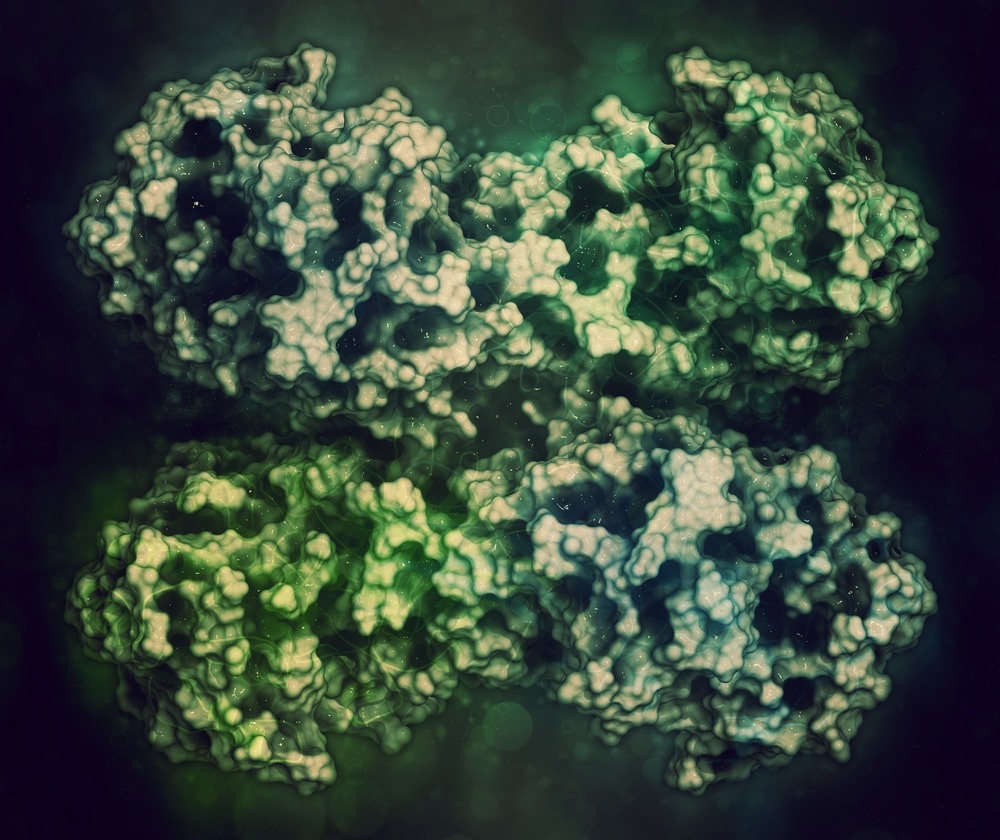RNA and DNA are the blueprints for life, containing all the information necessary to build the protein structures in every living organism. This article will briefly discuss the pentose phosphate pathway, which is the pathway that produces the sugars which make up these important biological molecules.

Image Credit: StudioMolekuul/Shutterstock.com
The Importance of Mistake-Free Nucleic Acid Synthesis
Due to the importance of DNA and RNA in the body, there need to be multiple layers of quality control in producing these molecules. This helps to avoid mistakes during nucleic acid synthesis, which helps avoid any unwanted mutations that can lead to adverse health conditions in the organism. The steps involved in synthesizing nucleic acids must ensure the lack of defects in the final product.
The Pentose Phosphate Pathway
This is an alternative branch of glycolysis, which is the pathway that provides energy for cells from sugars. The main difference between this pathway and other glycolysis pathways, which are sent through the rest of cellular respiration, is that no energy in the form of adenosine triphosphate is produced or consumed.
How Does the Pathway Happen?
The molecules that go through the pathway are primarily made of carbon. This is similar to some of the other cellular respiration processes. While this pathway is similar to theirs, there are key differences.
The first step of the pathway is the breaking down glucose in glycolysis. This provides the simple sugars needed to initiate the process. During the first step of the process, a phosphate group is added to the glucose. This generates glucose-6-phosphate, a carbon-6 molecule.
Glucose-6-phosphate can be produced by processes aside from glycolysis. The pathway can use any available glucose-6-phosphate molecules to initiate the production of the sugars necessary to manufacture DNA and RNA. The next phases of the pentose phosphate pathway are the oxidative and non-oxidative phases.
The Oxidative Phase
In the oxidative phase, the molecules break down due to the loss of one electron. The oxidative phase has two irreversible steps.
The first irreversible step involves the oxidation of glucose-6-phosphate to form lactone. A by-product of this step is NADPH. NADPH is similar in structure and function to NADH, a high-energy electron shuttle. NADP+ is reduced while glucose-6-phosphate is oxidized. After glucose-6-phosphate is oxidized, another reaction uses water to produce 6-phosphogluconate, the linear product. This step involves different enzymes.
The second step of the oxidative phase involves the cleavage of a carbon atom, releasing CO2. Again, the electrons are used to reduce NADPH+ to form NADPH. This step produces a 5-carbon molecule called ribulose-5-phosphate. Ribulose-5-phosphate is the first molecule of the non-oxidative phase of the pathway.
The Non-Oxidative Phase
Unlike the oxidative steps, the steps in the non-oxidative phase are reversible. Different molecules can enter the pentose phosphate pathway at different steps within the non-oxidative phase. They can be transformed up until ribulose-5-phosphate, which is the precursor to the sugar used by the process to manufacture DNA and RNA.
The first step of the non-oxidative pathway involves the conversion of ribulose-5-phosphate into two different 5-carbon molecules. One of these molecules is ribose-5-phosphate which is used to make up DNA and RNA.
The next steps of the non-oxidative phase depend on the needs of the cell. Two ribose-5-phosphate molecules from the previous step can be combined to form a 10-carbon molecule. Excess molecules can be converted into other sugars used for metabolism within the cell. This 10-carbon molecule can then be converted into 3 and 7-carbon molecules. The 3-carbon molecule can be used in glycolysis if necessary. Alternatively, it can be used to form more ribose-5-phosphate.
The final step of the non-oxidative phase involves further interconversion of the sugars. This produces 4- and 6-carbon molecules. The 4-carbon molecule is an amino acid precursor, while the 6-carbon molecule can be used in glycolysis. Again, this step is reversible.

Image Credit: zffoto/Shutterstock.com
Summing Up
The process occurs in the cytosol, the same location as glycolysis, an alternative pathway. The pathway involves oxidative and non-oxidative steps. The two most important products are NADPH, which helps to build other molecules, and ribose-5-phosphate, the sugar that DNA and RNA are made of.
Aside from donating electrons to the pentose phosphate pathway, NADPH can fight oxidative stress caused by dangerous free radicals, acting as an antioxidant. Free radicals can contribute to disease development, accelerate aging, and damage DNA and RNA. Due to the high concentration within cells and ready availability, NADPH provides a steady flow of electrons for this purpose.
Further Reading